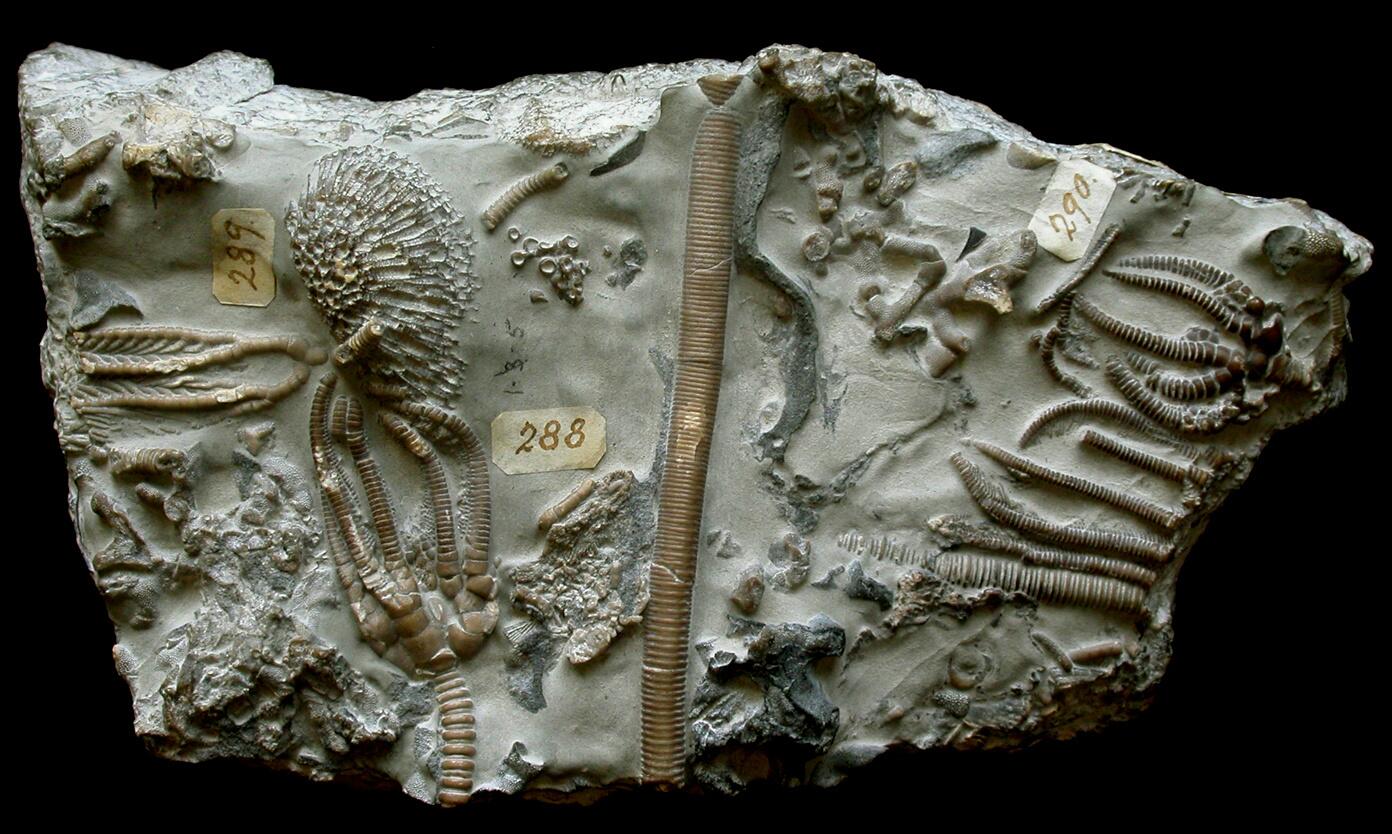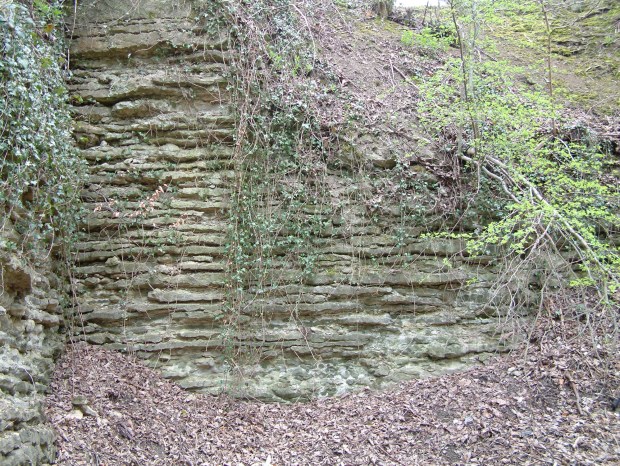Remineralization
[15–20 minutes]
This practical will introduce you different ways that a fossil can preserve. We'll look at a number of (virtual) specimens, and consider their taphonomic history, to get an appreciation of different modes of fossilization.
Remineralization
Let's start by looking at the possible fates of original shelly material. In rocks that haven't undergone much diagenesis, it's possible that the original microstructure – and even original colour – may be retained, as in this Pliocene gastropod (Ecphora quadricostata, PRI 70750; 38 mm long):
-
Remember, type f for full-screen view.
Click the × in the top-right corner when you're done to help your computer render other models. - Get help with 3D models
- Which biominerals are most likely to be preserved in their original form?
-
Stable minerals are more likely to preserve: e.g. low-Mg calcite over high-Mg calcite over metastable aragonite.
Phosphate has a smaller stability field than carbonate (7 < pH < 7.8; eH < 0), so is less likely to preserve.
I'm not counting carbon as a 'mineral' for the purposes of this question...

Permineralization is the infilling of spaces in a fossil with a mineral. As space is replaced with mineral, the resulting fossil may feel denser than expected.
The Creteaceous wood below, from Antarctica, has been permineralized in silica; the black colour is likely the original carbon. Specimen size: ~ 90 mm
Recrystalization is when crystal structure is rearranged, despite the original atoms being retained – only their configuration is altered.
The typical example is aragonite transforming to calcite, but dissolution and reprecipitation in situ can lead to original calcite microstructure being overprinted.
- Classify the organism in the thin section as best you can. What was its likely original mineralogy?
- The near-perfect symmetry of the valves suggests a bivalve mollusc. Bivalves can be aragonitic or calcitic; the uniform replacement hints at an originally aragonitic microstructure, but calcite layers could also have been remineralized.
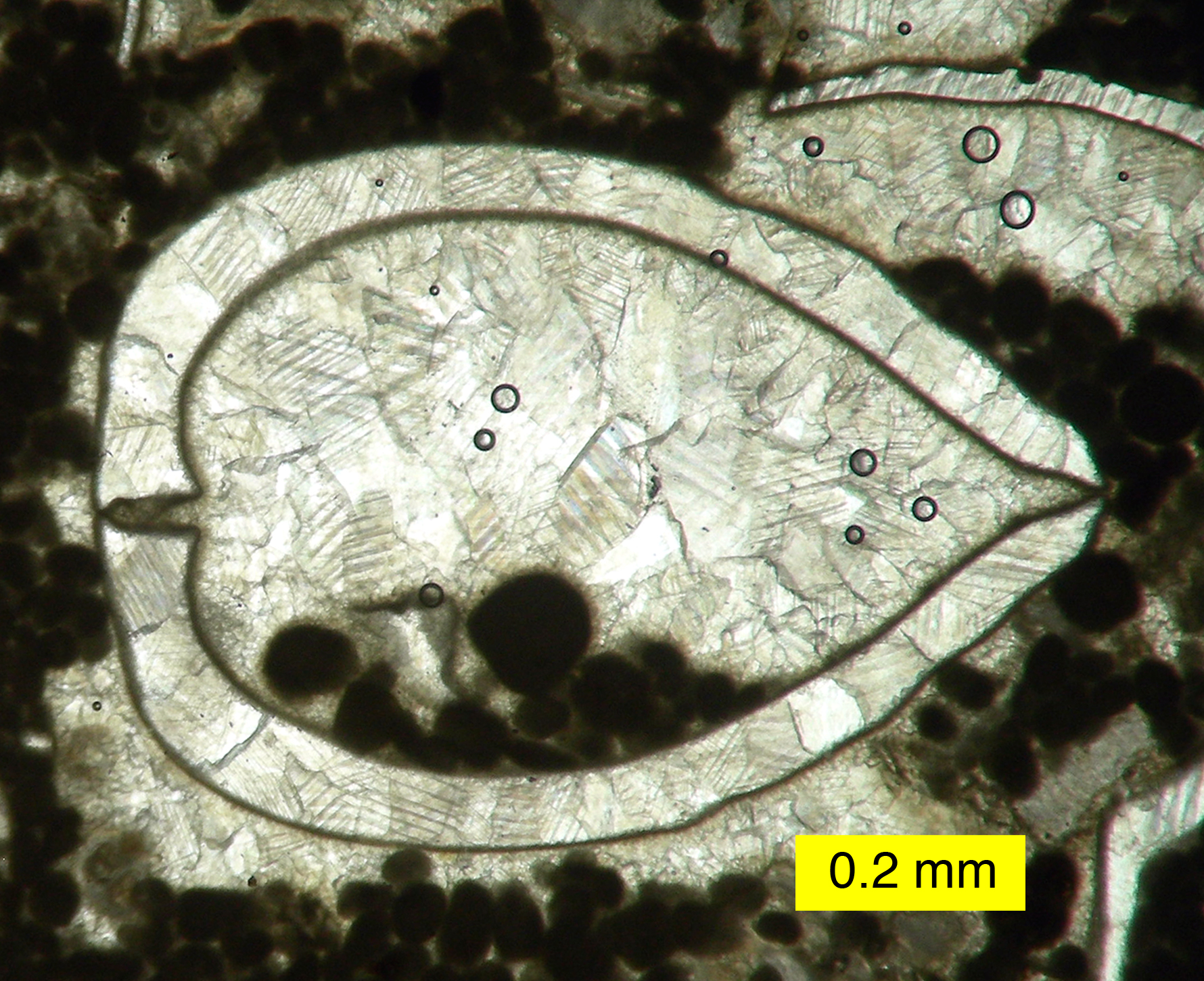
The shell of this brachiopod, Paraspirifer bownockeri (PRI 76880; width: ~ 45 mm), has been replaced with pyrite, now visible as a 'golden' layer encasing an internal mould of the shell.
- What brachiopod class does Paraspirifer belong to?
- It's a spiriferid. Note the strophic hinge line and deep conical wings (handy for housing that spiral lophophore + brachidium).

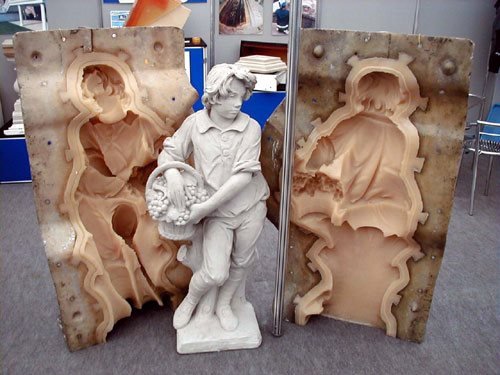
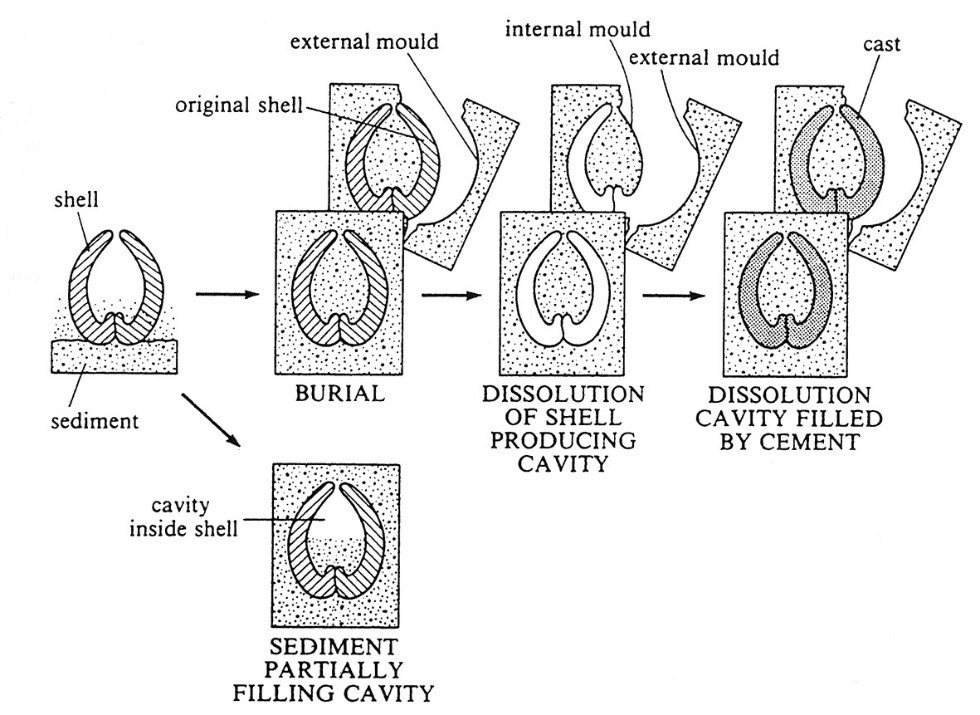
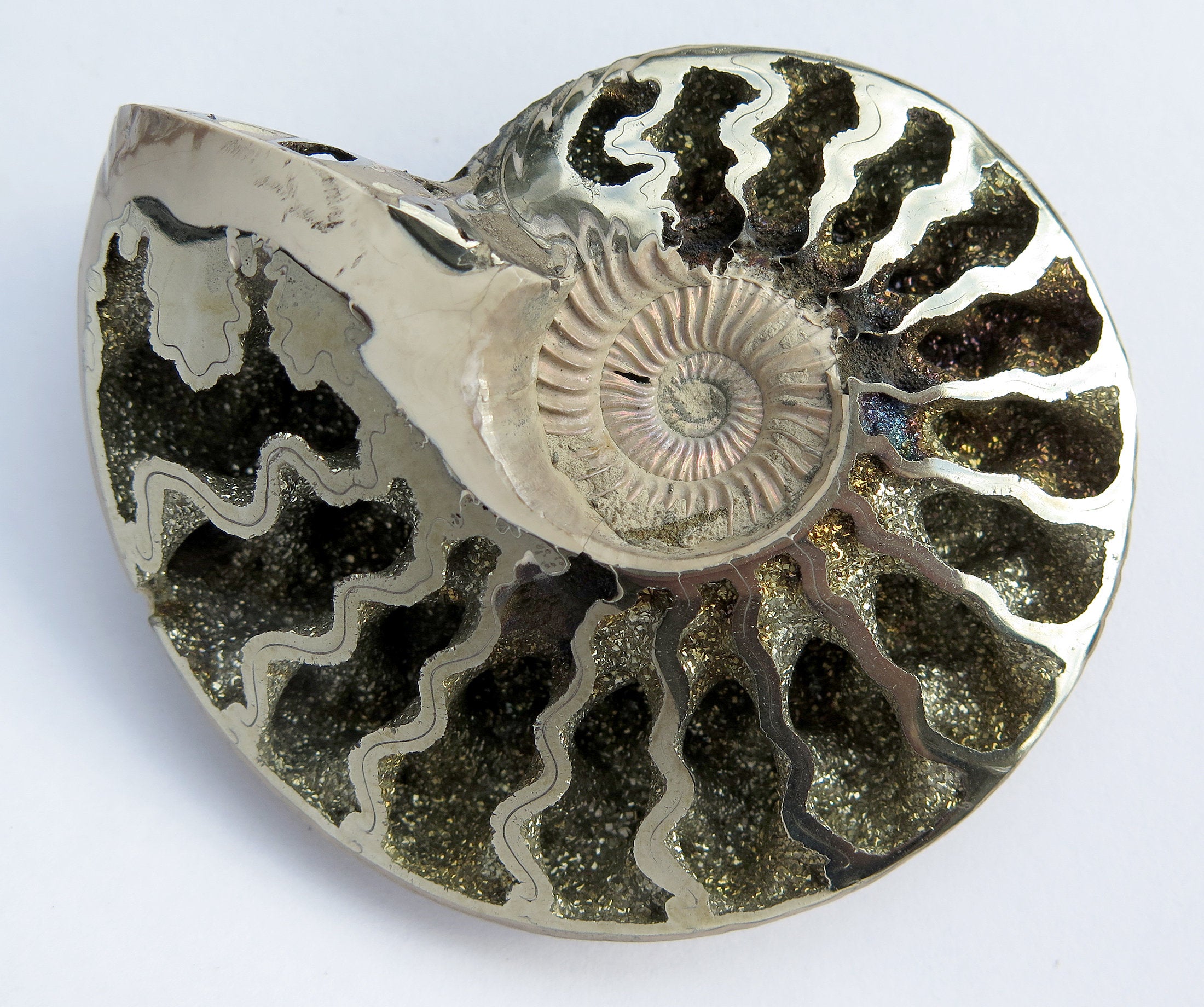
.jpg)
